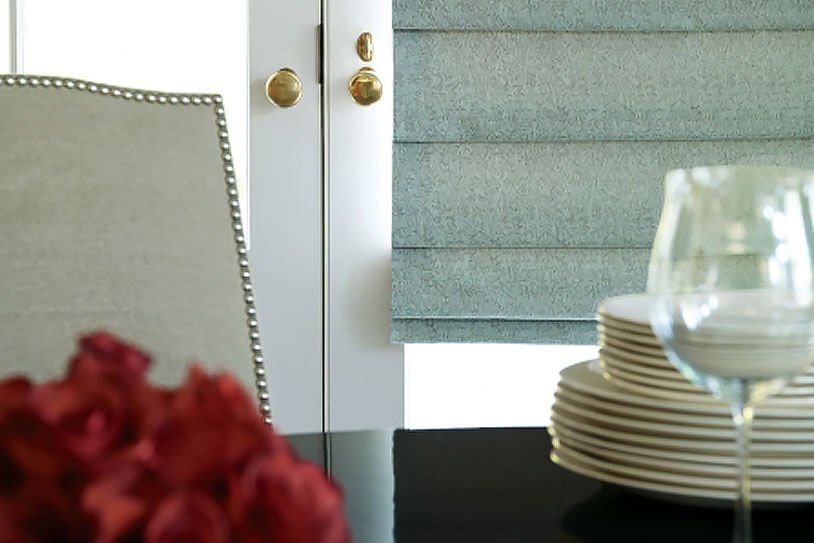Your Journey to a Beautiful Home Starts at Sunshine Drapery
Receive a complimentary professional in-home design consultation today!

Have you ever stopped to wonder from where "roman shades" take their name? Precursors of these modern-day multi-taskers of beauty and sun protection were used as far back as Roman times, where fabric awnings shielded Coliseum spectators from the sun's rays. The ropes and pulleys engineered to maneuver the shades are related to the current cord system used to raise and lower today's roman shades into the graceful folds that define them. There arethree basic types of roman shades: loose and unconstructed; rigid (featuring braces or back bars on the reverse side of the shade); and stationary or faux shades. Examples of the loose variety include flat and relaxed shades. Examples of the rigid variety include constructed flats, balloon, butterfly, Austrian, waterfall, and pleated shades. Faux shades are purely decorative, more like window valances, with no real moving parts. Flat, or reconstructed, roman shades, as the name implies, consist of a single piece of fabric with no additional support bars or seams. This is a good option if you have a bright or busy fabric pattern as there is no need to worry about the pattern repeat getting interrupted by stitching, seams, or swags, and the simplicity of shade style won't distract from the other room decor. The relaxed shade is alternatively called a London or soft shade. Its lack of rigidity makes this style best suited for windows around 4' wide as the fabric will create a slight center bow when raised. You can choose an unconstructed shade style for a window space wider than 4', just know that it will result in a double (or even triple) pouf when raised, depending on the total fabric width. Unlike the previous two examples, a constructed flat shade utilizes evenly spaced back bars to add durability. It still provides a clean, simple silhouette that is modern and minimal or, dressed up with additional coordinating valances, swags, or draperies, is more formal. For an even more formal look, and in instances where decor trumps functionality, a balloon roman shade provides high style. Mounted outside of the window area, this style incorporates additional box pleats atop the shade, which provide fluffed-up scalloping fabric swoops at the base for a dramatic look and feel. The so-called butterfly shade adds wings to the bottom swag, incorporating a touch of whimsy. The most traditional of all types is the Austrian-style shade. Consisting of twice as much fabric as a flat shade, it features both horizontal and vertical lines with strong ruching and scalloped edges. As you might expect, this is also the costliest roman shade variety. The waterfall shade takes its name from the soft cascading fabric folds it displays regardless of the shade's position. These are popular in eco-friendly and sustainable materials like bamboo and wicker to add an element of texture to a room, but can also of course be fashioned with traditional fabrics, too. Perhaps most closely related to the fabric swaths of the Coliseum, pleated, or tucked, shades feature sewn-in dowels and rod pockets providing strength and rigidity. The uniformly spaced panels create a crisp horizontal profile when the drapes are raised and the panels nestle together in a taut stack. No matter what your home decorating style is, one of these roman shade examples should sync up with your look and provide the finishing touch that drapes bring to a room.
)
Receive a complimentary professional in-home design consultation today!